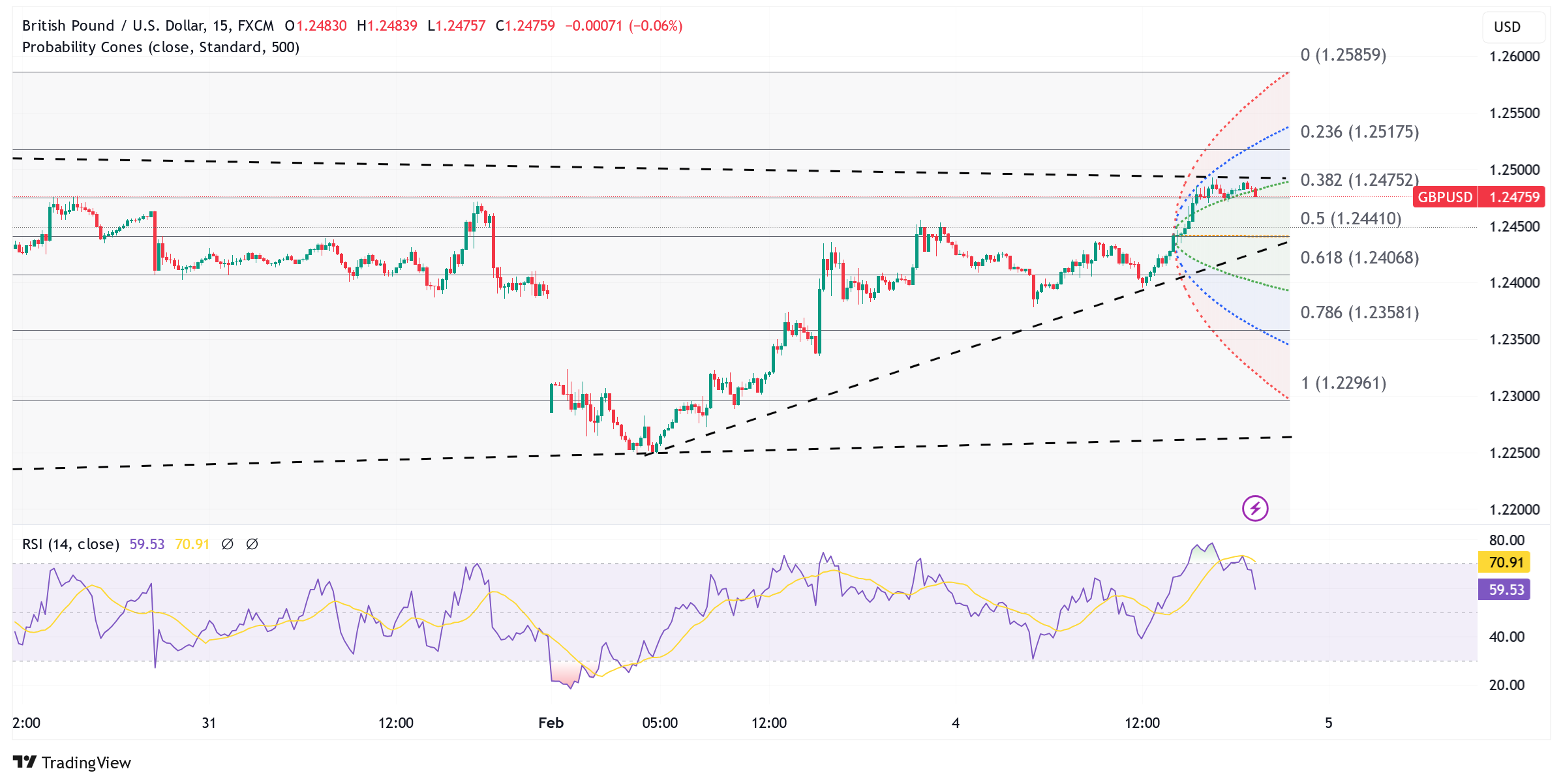Sterling Caught in Trade-Driven Volatility, Faces Key Resistance at 1.2458

GBP/USD fluctuated sharply on Monday, rising to 1.2455 as the U.S. dollar weakened after Trump paused tariffs on Canada, only to drop to 1.2384 after Washington implemented new tariffs on Chinese goods. Beijing’s swift response, announcing counter-tariffs effective February 10, introduced fresh uncertainty into the market, leading to a cautious trading environment. The back-and-forth in GBP/USD reflects ongoing sensitivity to trade policy developments, with traders adjusting positions in real time as new information emerges.
Technical analysis highlights key levels for GBP/USD. Support is firm at 1.2384, slightly above the prior pullback low from the 1.2435 peak reached after the Mexico tariff pause. Resistance lies at 1.2458, marking the 76.4% Fibonacci retracement of the 1.2523-1.2249 decline, with further upside capped at 1.2472. A break below 1.2384 could see GBP/USD slide toward 1.2300, while a move above 1.2458 would increase the likelihood of retesting recent highs. Despite ongoing volatility, sterling remains range-bound in the short term.
Political uncertainty adds another layer of risk for GBP/USD. A YouGov poll showing Reform UK leading both Labour and the Conservatives underscores growing domestic instability, which could weigh on sterling in the coming weeks. Meanwhile, global risk sentiment remains fragile as markets assess the impact of U.S.-China trade tensions. With upcoming tariff implementations and UK political dynamics in focus, GBP/USD traders should brace for continued volatility, with key resistance and support levels dictating near-term price action.

